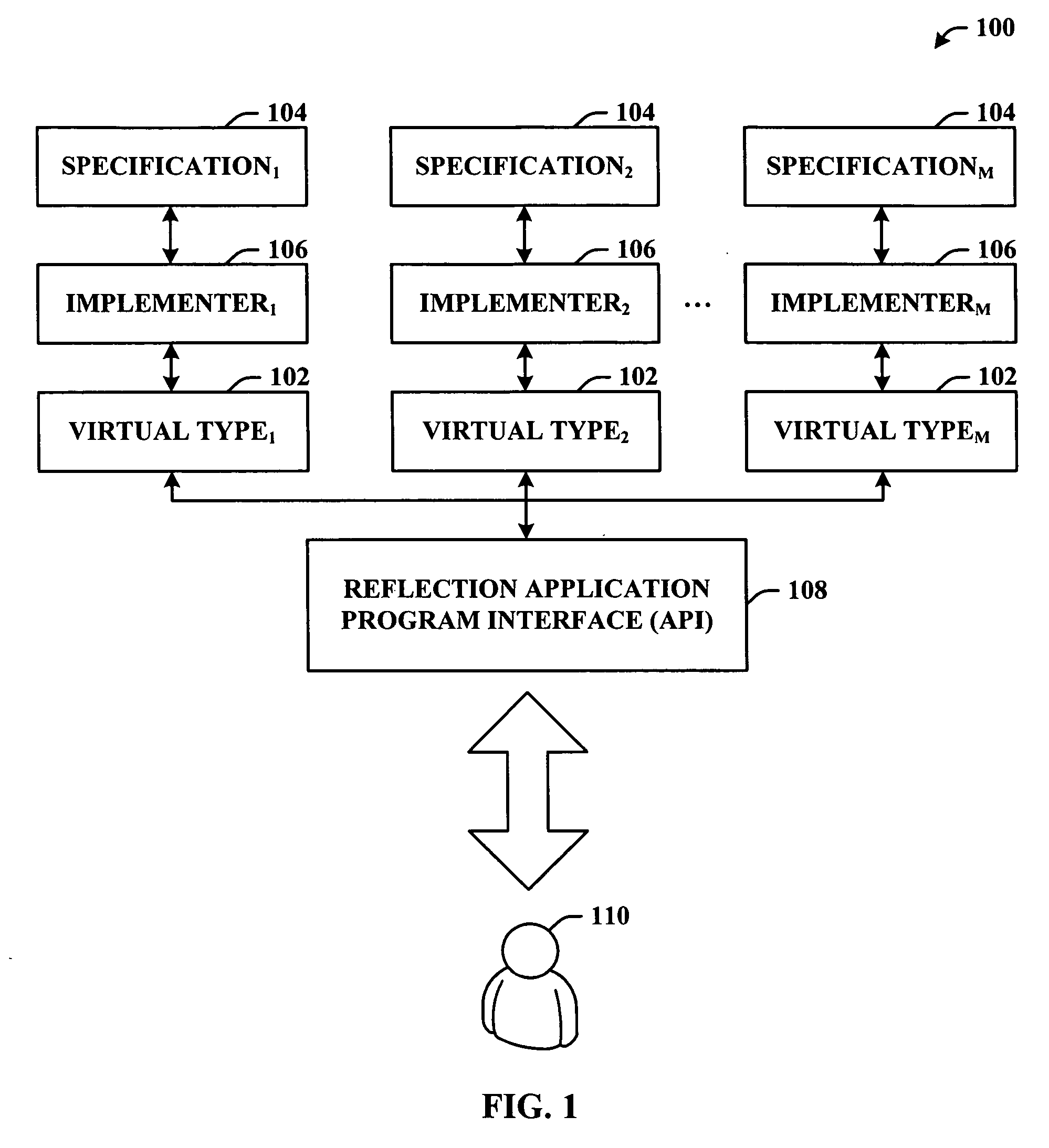Virtual types
a virtual type and type technology, applied in the field of virtual types, can solve the problems of exposing new types, unable to support the unloading of the inability to load domains in the design environment, so as to facilitate the creation of instances and facilitate the effect of emulating virtual types
- Summary
- Abstract
- Description
- Claims
- Application Information
AI Technical Summary
Benefits of technology
Problems solved by technology
Method used
Image
Examples
Embodiment Construction
[0024] The following terms are used throughout the description, the terminology and definitions are provided herein to assist in understanding various aspects of the subject invention.
[0025] Deserialization refers to the act of interpreting source code to create a live object. It is to be understood that this interpretation can be a simple, direct interpretation of the statements. Additionally, it can involve redirection to create a different type of object. For example, in one designer environment, the line “new ResourceManager(this)” in the form specification actually creates a different type of resource manager.
[0026] Designer Reload refers to the situation when the type of a live object in the designer changes. In this situation, the designer shuts down and reloads again by deserializing the source code. Types can change when a project is rebuilt. Designer reloads can be undesirable because they are usually slow and can destroy a user undo stack.
[0027] Global Object refers to...
PUM
 Login to View More
Login to View More Abstract
Description
Claims
Application Information
 Login to View More
Login to View More - R&D
- Intellectual Property
- Life Sciences
- Materials
- Tech Scout
- Unparalleled Data Quality
- Higher Quality Content
- 60% Fewer Hallucinations
Browse by: Latest US Patents, China's latest patents, Technical Efficacy Thesaurus, Application Domain, Technology Topic, Popular Technical Reports.
© 2025 PatSnap. All rights reserved.Legal|Privacy policy|Modern Slavery Act Transparency Statement|Sitemap|About US| Contact US: help@patsnap.com



